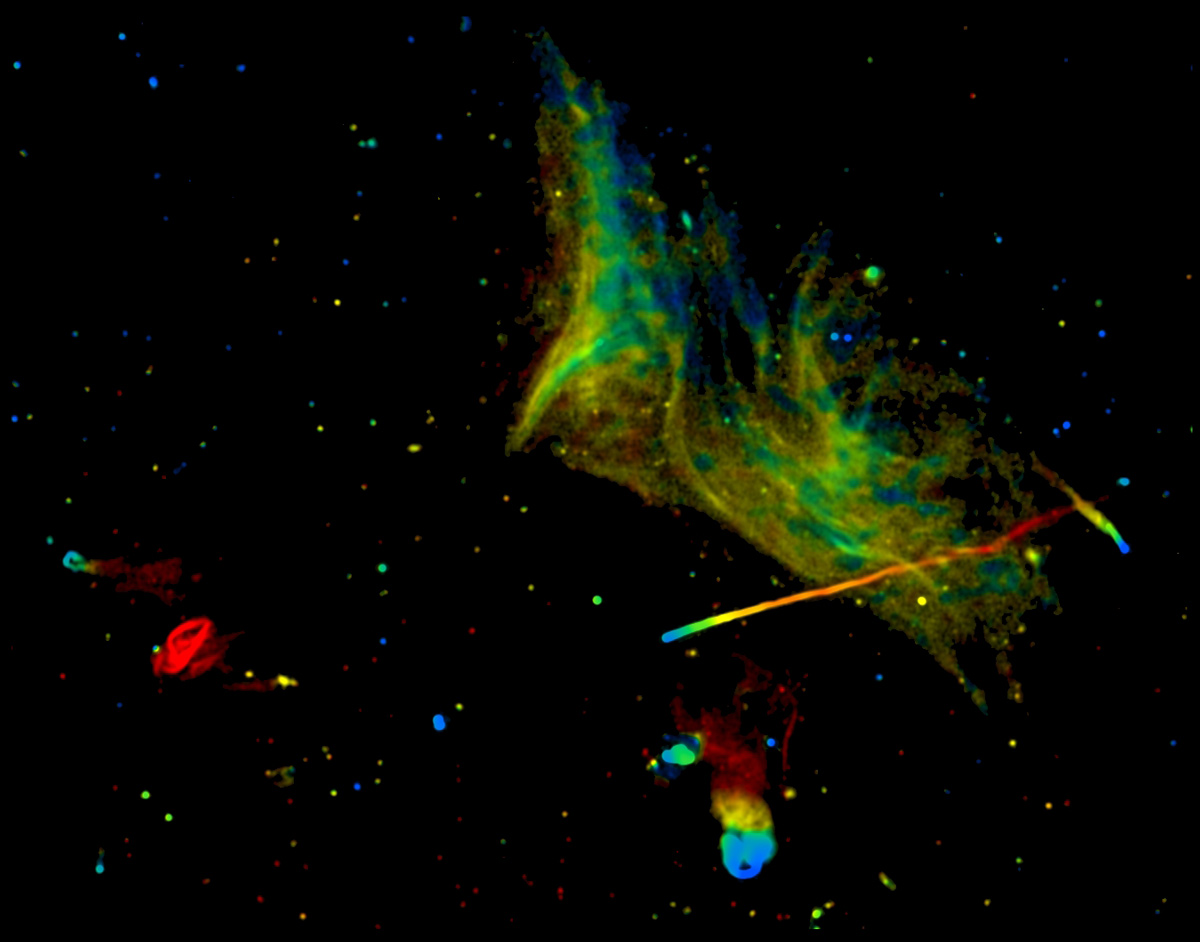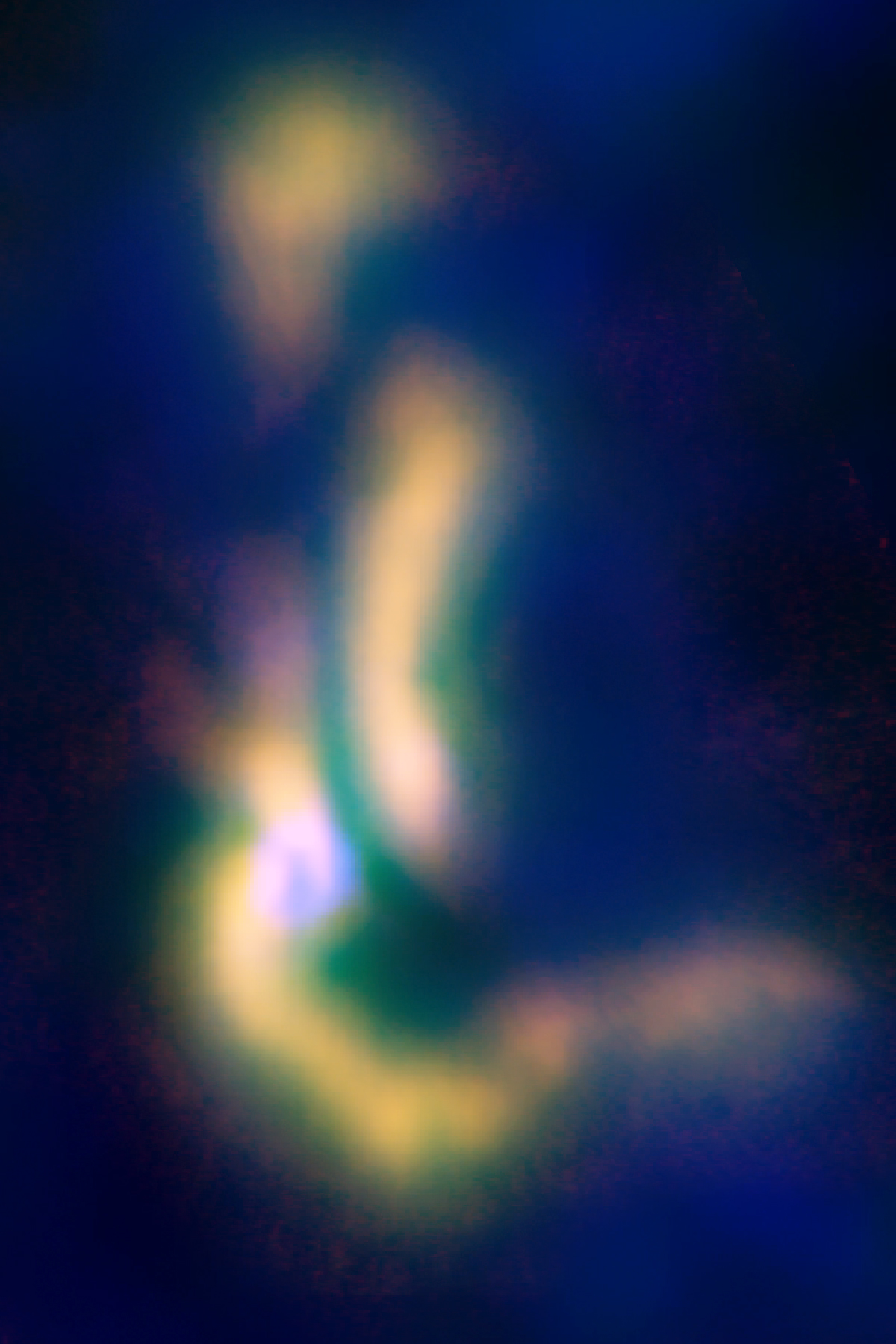Researchers using the Karl G. Jansky Very Large Array (VLA) have produced the most detailed image yet of a fascinating region where clusters of hundreds of galaxies are colliding, creating a rich variety of mysterious phenomena visible only to radio telescopes. The scientists took advantage of new VLA capabilities to make a "true color" radio...




